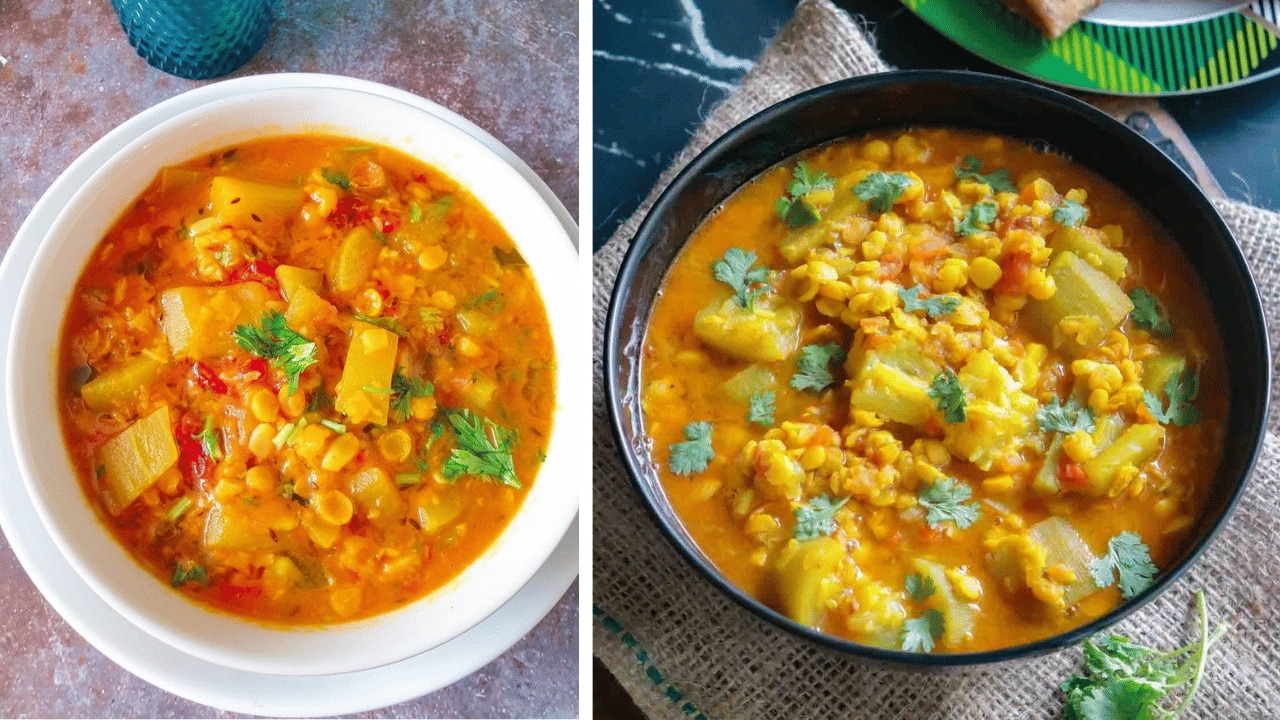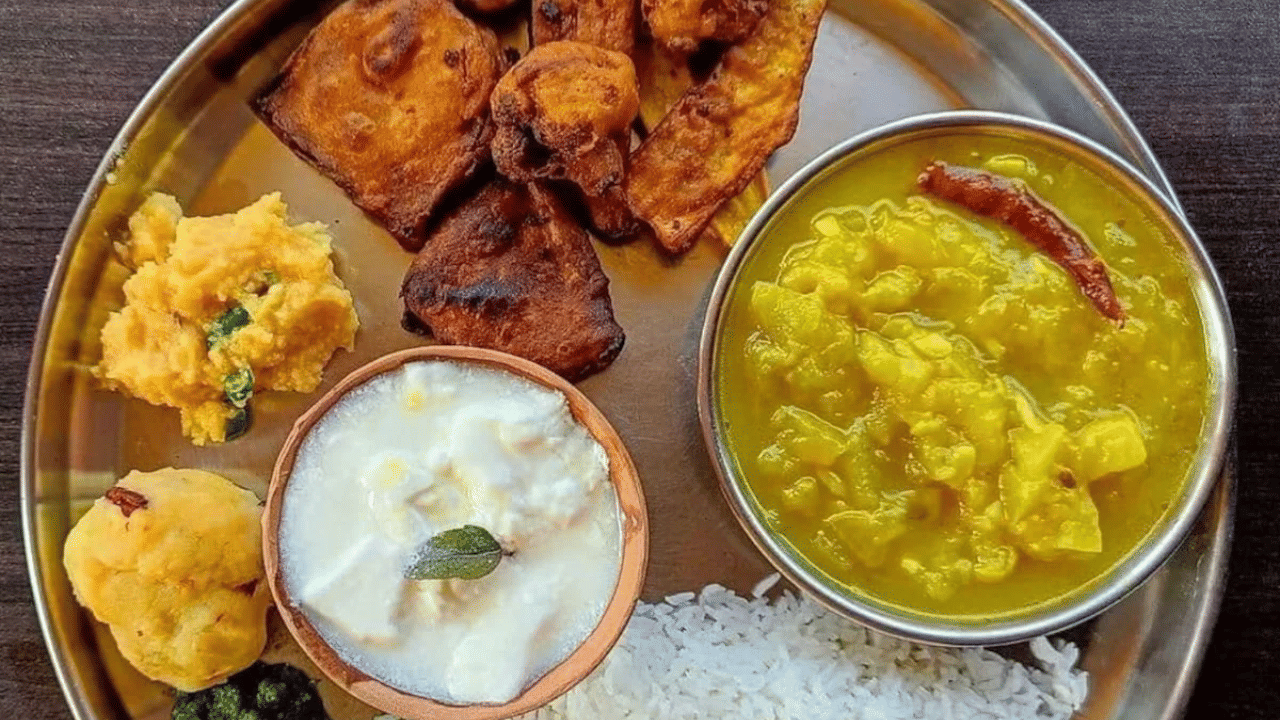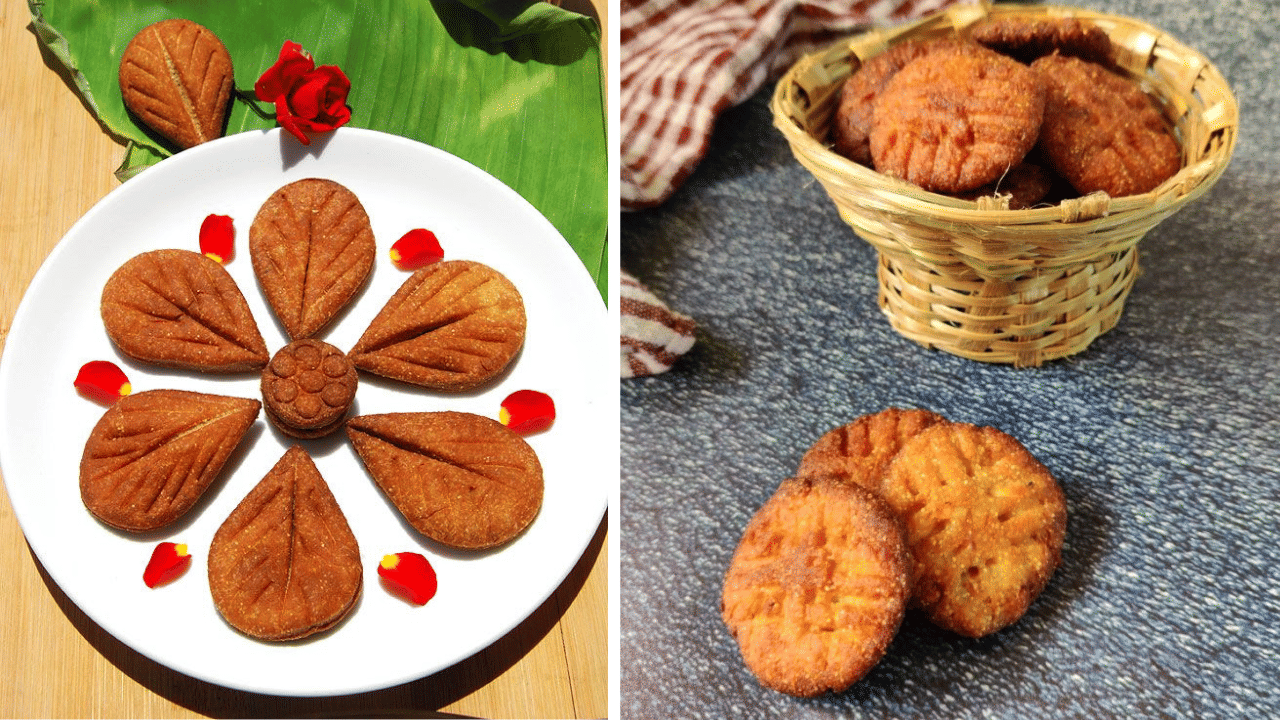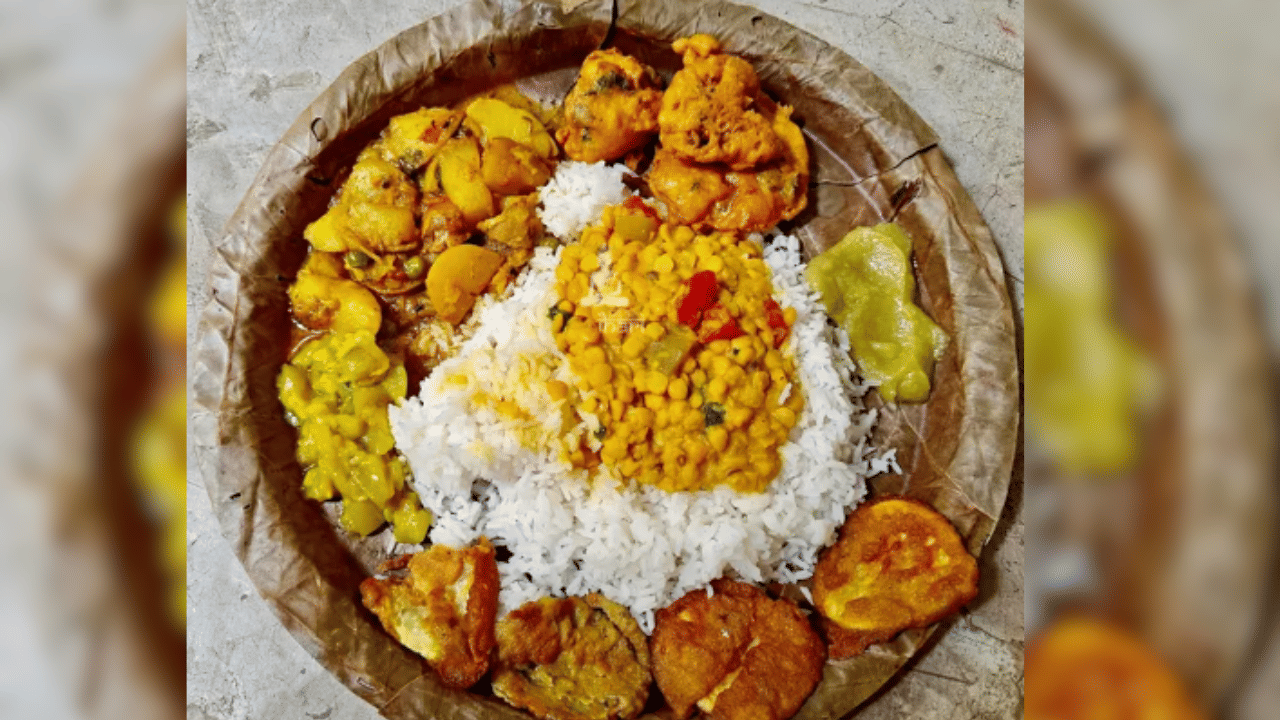New Delhi: Chhath Puja 2025 date falls on October 25, 2025, this year. It is Bihar’s most sacred sun festival dedicated to Lord Sun and Chhathi Maiya. The first day of the four-day festival is known as Nahay Khay, translating into “Bathe and Eat.” On the day of Nahay Khay, devotees purify themselves, their homes, and their kitchens as they take the first spiritual step of the fast dedicated to the almighty.
People bathe themselves and eat a pure, Sattvick meal on Nahay Khay to invite prosperity, health, and wealth. This ritual symbolises the body’s transition from indulgence to restraint and gratitude. Every dish on Nahay Khay thali carries a divine significance, simple yet deeply fulfilling both spiritually and physically. Nahay Khay of Chhath Puja 2025 is a tradition and ritual of pure devotion, faith, and mindfulness, devotees and their mindfulness.
Special ingredients of the sacred Nahay Khay thali
1 Lauki Dal
Lauki (bottle gourd) is slowly cooked with Bengal gam (chana dal). A mild tempering of ghee and rock salt makes it a perfect dish of Nahay Khay that cools the body and prepares the devotee for the fasting days ahead.

2. Kaddu Bhaat
Translating into pumpkin rice in English, Kaddu Rice is a comforting mix of sweet pumpkin and rice cooked together in ghee with minimal spices like cumin and turmeric. It is the centrepiece of the Nahay Khay thali.

3. Plain rice
Plain white rice drizzled with a spoon of ghee is served in the Nahay Khay thali, reminding us that food cooked with purity and devotion is an act of offering to both God and self.
4. Tarau
Tarau are deep-fried fritters made from vegetables like potato, bottle gourd, and raw banana.
5. Thekua
The heart of the Nahay Khay thali lies in the freshly prepared Thekua made from wheat flour, jaggery, and ghee.

6. Seasonal fruits
To complete the Nahay Khay thali, seasonal fruits like bananas, apples, and sugarcane is also included.
As the first meal of Chhath Puja 2025, the Nahay Khay thali is prepared with meticulous rituals—freshly cleaned utensils, filtered water, and kitchens sanctified with Gangajal. The meal isn’t eaten merely to fill stomachs—it’s shared as an offering of purity, humility, and gratitude before beginning the fasting journey.
